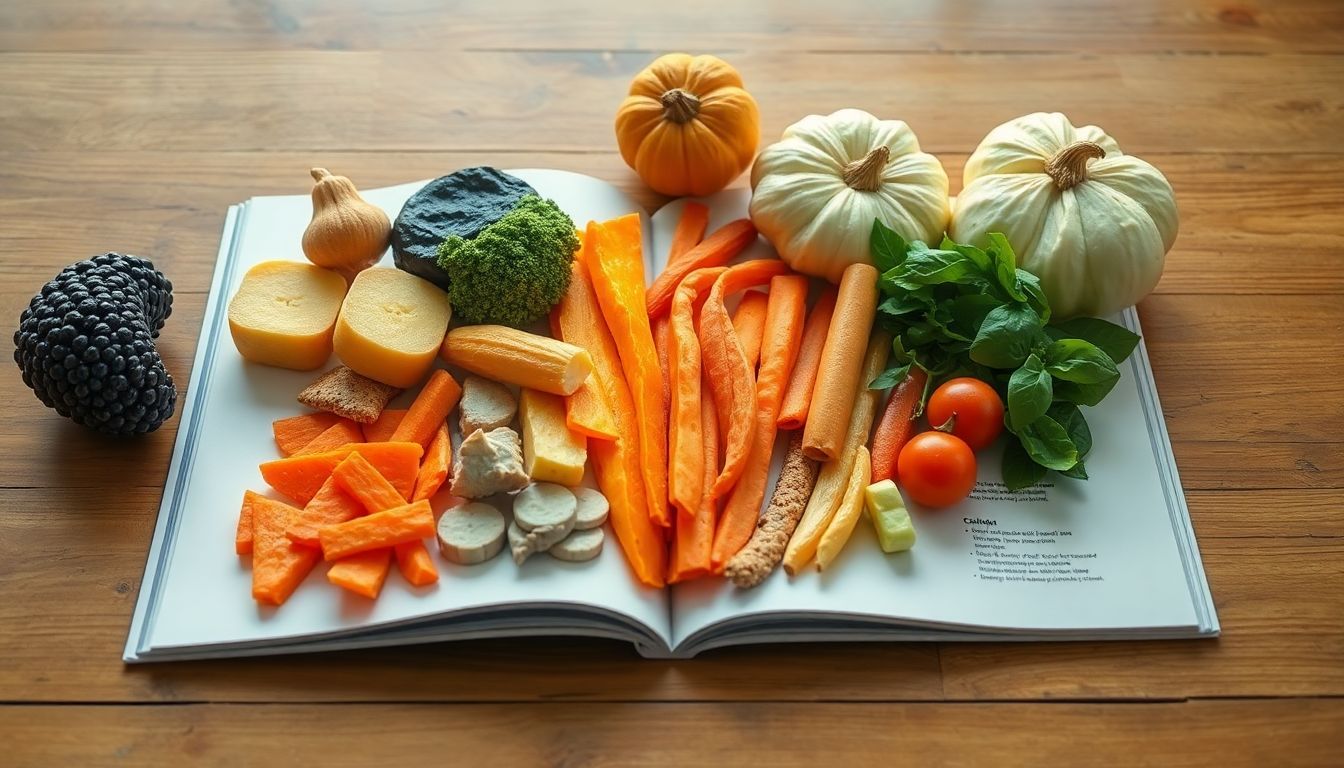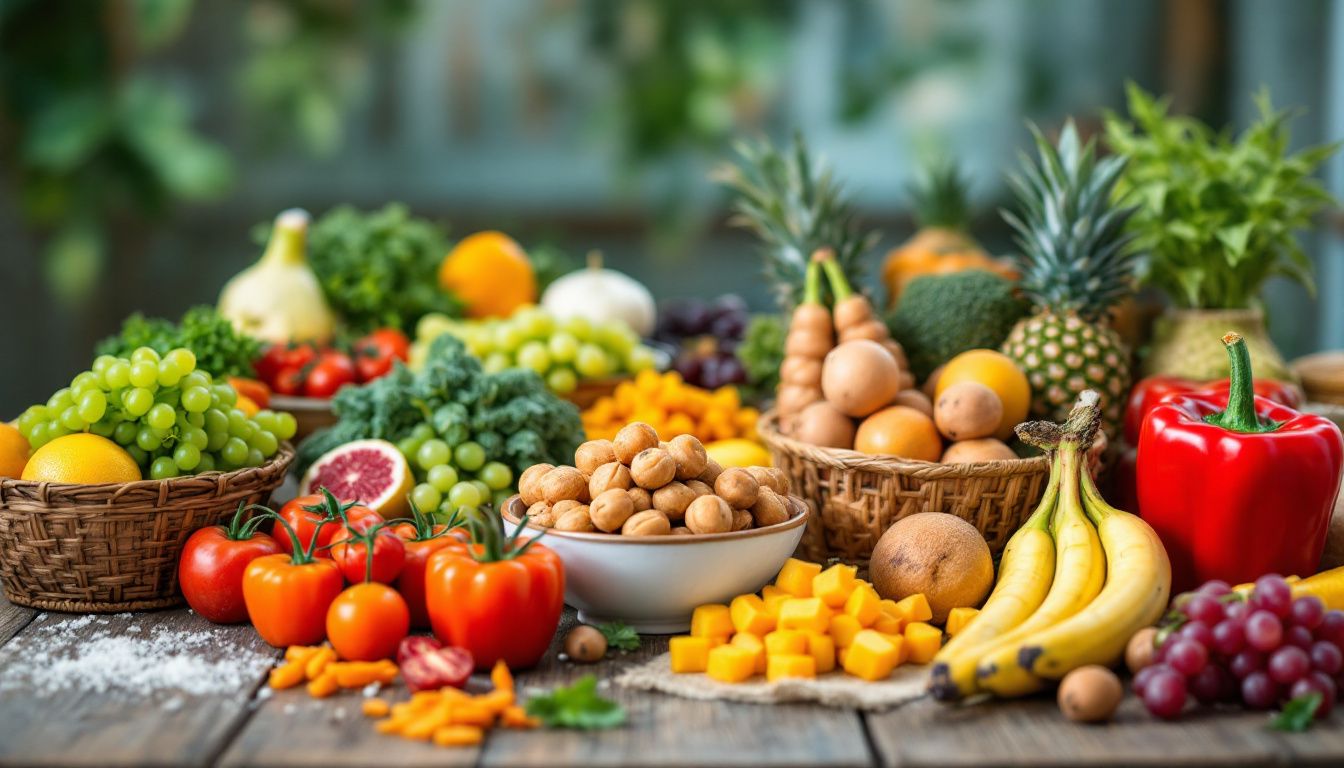The holidays often bring joy—and extra weight. Foods with a high glycemic index can cause blood sugar spikes, leading to cravings and overeating. This blog will show tips to avoid weight gain while still enjoying festive meals.
Thank you for reading this post, don't forget to subscribe!Keep reading for easy ways to stay healthy this season!
Key Takeaways
- Choose low GI foods like whole grains, lentils, fruits, and vegetables to keep blood sugar steady and control cravings.
- Avoid high GI foods like white bread, sugary desserts, and soda as they cause quick sugar spikes and hunger.
- Pair low GI foods with proteins (like turkey or eggs) and healthy fats (like olive oil or avocado) for balance and fullness.
- Stay active with simple activities like family walks after meals to burn calories and improve digestion.
- Eat slowly, drink water before meals, track your food habits in a journal, and enjoy treats in moderation to manage holiday weight gain.
Understanding the Glycemic Index
The glycemic index (GI) measures how quickly a food raises your blood sugar. Foods with lower GI values help keep energy steady and reduce sudden sugar spikes.
Ranking carbohydrates based on their effect on blood sugar levels
Carbohydrates affect blood sugar differently. The Glycemic Index (GI) ranks them on a scale of 0 to 100. Low GI foods, scoring 55 or less, raise blood sugar slowly. High GI foods, like white bread or sugary cookies, cause rapid spikes.
Sweet potatoes and whole grains are great low-GI options for steady energy during the holiday season. On the other hand, mashed potatoes and baked goods often have higher GIs. Choosing fiber-rich foods like fruits and vegetables helps keep blood glucose stable while supporting weight management.
Low GI foods result in gradual blood sugar increase, while high GI foods cause quick spikes
Low GI foods have a score of 55 or less and cause slow rises in blood sugar. Examples include whole grains, lentils, leafy greens, and tomatoes. These foods help you feel full longer and promote weight management.
They also lower the risk of type 2 diabetes and heart disease.
High GI foods score 70 or higher. Candy, white bread, mashed potatoes, soda, and sugary desserts fall into this group. They quickly spike blood sugar levels but leave you hungry sooner.
Frequent spikes can lead to weight gain or issues with your digestive system over time.
Prioritizing Low GI Foods During Holiday Meals
Choosing foods with a low glycemic index can help keep blood sugar steady during holiday feasts. Focus on options that digest slowly, leaving you full longer and cutting down cravings.
Whole grains, legumes, fruits, and vegetables
Whole grains, like quinoa and brown rice, have a low glycemic index. These foods provide fiber-rich energy and help keep blood sugar steady. Oats or whole-grain bread can replace white breads for better weight management during the holiday season.
Legumes such as lentils and chickpeas are great options too. They digest slowly, keeping you full longer. Pair these with fruits like apples or berries for natural sweetness without added sugar.
Vegetables—like spinach, broccolini, and carrots—offer vitamins while controlling blood sugar spikes.
Eating more plant-based foods is one step toward staying healthy over the holidays.
Avoiding high GI foods like white bread and sugary desserts
Skip sugary desserts like cakes and cookies. They can spike blood sugar quickly, leading to weight gain over time. White bread is another culprit—it raises glucose fast but leaves you hungry soon after.
Switch to low glycemic options for better energy levels. Choose whole grains instead of white bread or plain yogurt with fruits instead of sweet treats. Up next: planning tasty low GI meals!

Planning Ahead for Low GI Meals
Plan your meals to include more low glycemic foods. Focus on balance, and match them with proteins or healthy fats for a filling holiday plate.
Incorporating low GI foods and controlling portion sizes
Choose foods like whole grains, fruits, and vegetables to keep blood sugar steady. Low glycemic diet options help with weight management by avoiding spikes in energy levels that lead to overeating.
Pair these with lean proteins like turkey breast or healthy fats such as olive oil for a more balanced meal.
Portion control is key during the holiday season. Use smaller plates to serve fiber-rich foods and limit high GI choices like mashed potatoes or sugary desserts. This approach prevents consuming extra calories while enjoying your favorite dishes.
Including proteins and healthy fats for satiety
Eating protein and healthy fats during meals helps keep you full longer. Foods like grass-fed beef, eggs, nuts, and olive oil can reduce the urge to snack on sugary treats. Balanced meals with these nutrients also help prevent quick spikes in blood sugar levels.
Healthy fats from sources like avocados or salmon work well with fiber-rich foods such as fruits and vegetables. This combination slows digestion and controls hunger better than carbs alone.
Including proteins like chicken or turkey in holiday dishes adds flavor while supporting weight management goals.
Staying Active During the Holidays
Holidays can get busy, but staying active keeps your energy up. Try turning simple moments into fun movement—every step counts!
Engaging in family walks or activities to burn calories
Take a stroll after meals with your family. It helps burn off holiday calories while improving mood and digestion. Walking just 30 minutes can enhance your metabolism, supporting weight management efforts.
Try fun group activities like hiking or playing tag with kids. Games keep everyone active without feeling forced. These moments bring loved ones together and make staying fit enjoyable during the holiday season.
Mindful Eating Practices
Eat slowly, enjoy each bite, and listen to your body—this can help control holiday cravings.
Savoring food and eating slowly to prevent overeating
Eating slowly gives your stomach time to signal fullness. It can take about 20 minutes for this message to reach the brain. This helps prevent overeating during holiday meals filled with mashed potatoes, desserts, and green bean casserole.
Savoring food improves enjoyment and satisfaction. Focus on flavors, textures, and smells in each bite instead of rushing through a plate. This mindful eating habit promotes better weight management during the holiday season.
Hydration and Food Journaling
Drink water before meals to reduce hunger and avoid overeating. Keep a journal of what you eat, so you can track your habits and make better choices.
Water intake before meals and tracking eating habits
Drinking water before meals helps control hunger and reduce calorie intake. A glass of water, about 20–30 minutes before eating, supports healthier portion control during the holiday season.
It also prevents mistaking thirst for hunger. Sparkling water can be a festive yet smart choice over sugary beverages or punches.
Tracking eating habits in a food journal keeps you mindful of your choices. Write down every meal or snack to spot patterns that lead to overeating or unhealthy options like mashed potatoes with too much butter.
Keeping tabs makes it easier to balance low GI foods such as whole grains and green salad with treats like red meat or desserts in moderation.
Moderation and Sharing Healthy Dishes
Enjoy festive treats without overdoing it. Share low-sugar or fiber-rich dishes to create balanced options for everyone.
Enjoying holiday treats in moderation and creating a positive food environment
Limit sugary desserts like mashed potatoes drowned in butter, opting instead for fiber-rich foods such as fruits and vegetables. Share healthy dishes, like salads with olive oil or whole grain stuffing, to keep the table balanced and inviting.
Swap alcoholic beverages for sparkling water or spirits mixed with low-sugar options. A positive food environment encourages mindful eating and lets everyone enjoy treats without guilt or overeating.
Conclusion
You can enjoy the holidays without gaining weight by making smart food choices. Focus on low GI foods like whole grains, fruits, and vegetables to keep your blood sugar stable. Pair them with proteins and healthy fats for balance.
Stay active, eat mindfully, and enjoy treats in moderation. Small steps can make a big difference!
